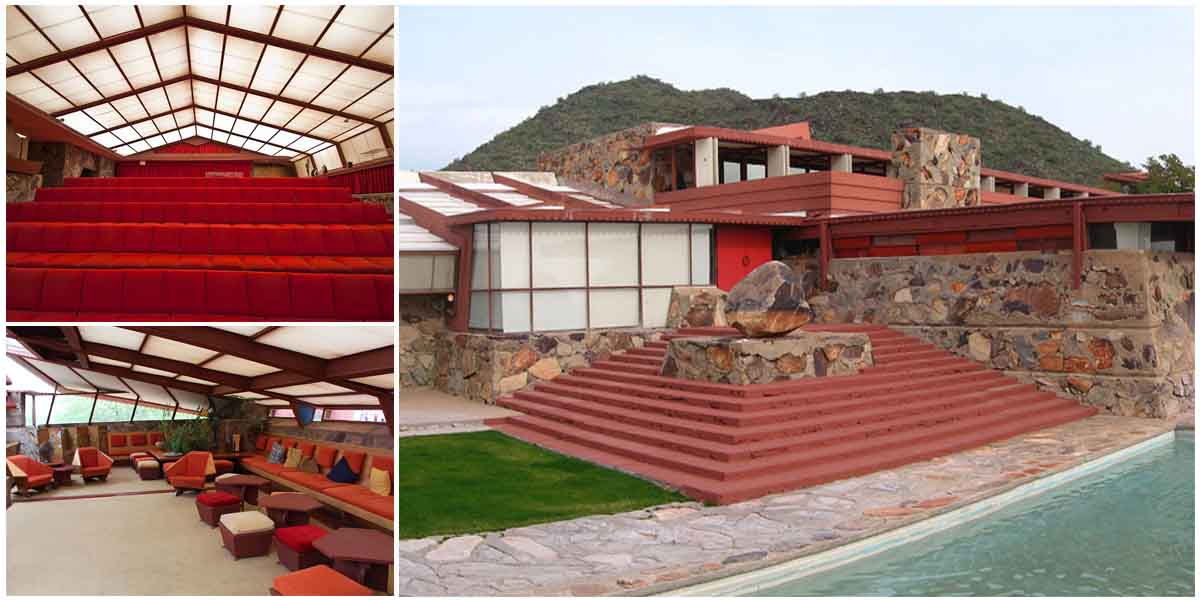One of the most personal creations of architect Frank Lloyd Wright is his winter home, built in an Arizona desert in 1937. Wright lived in it until his death in 1959. Today, it is the home of the Frank Lloyd Wright Foundation and serves as a campus of the Frank Lloyd Wright School of Architecture. Created almost entirely by him and his apprentices, it is a National Historic Landmark.
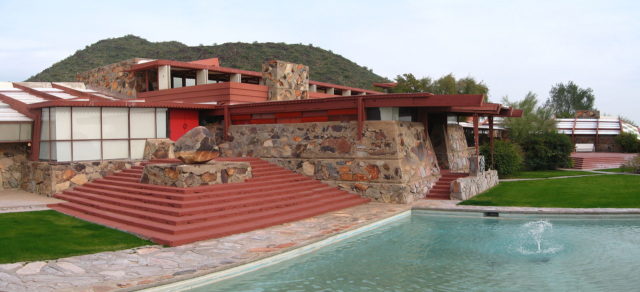
The desert plot that Wright purchased for his new home overlooks Paradise Valley near Scottsdale, and is situated on the McDowell Range. His plans for the house were to make it a place for residence, learning, and business. He paid $10,000 for a well to provide water. When he first scouted out the plot, Wright found Native American petroglyphs. One of them can be seen today that looks like two hands clasping.
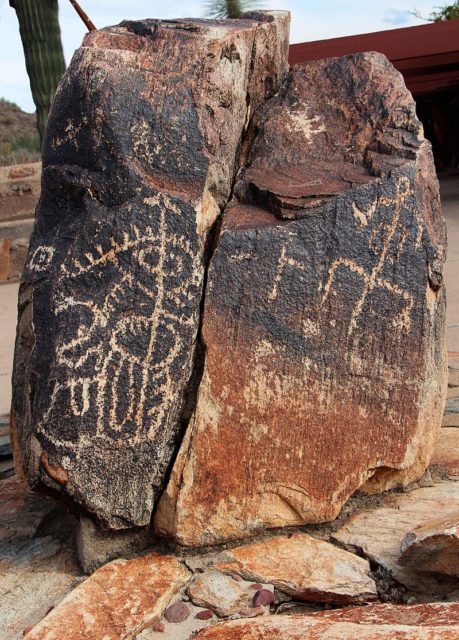
Taliesin petroglyph. Photo Credit
“Arizona needs its own architecture,” Wright once said. To reference the landscape, the house was made of desert rocks within a wood structure and filled with concrete to form the walls. It is a one-floor house with several terraces, gardens, and pools. Wright felt a deep connection with the desert and decided that the whole project should be finished out of materials that were found on the site.
In fact, Wright always preferred to work with materials from the surrounding areas; he didn’t like to transport materials from elsewhere.
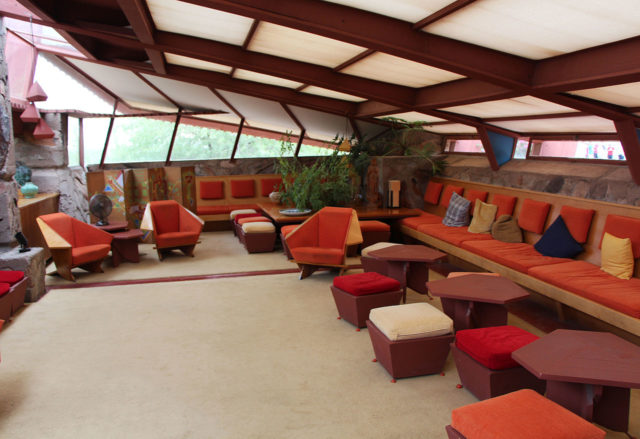
One of the major elements in the design was the use of natural light. In this way the inside of the house is in touch with its surroundings. The exterior of a few rooms is in red-tinted timber; the constructions are wreathed in a rib-like structure.
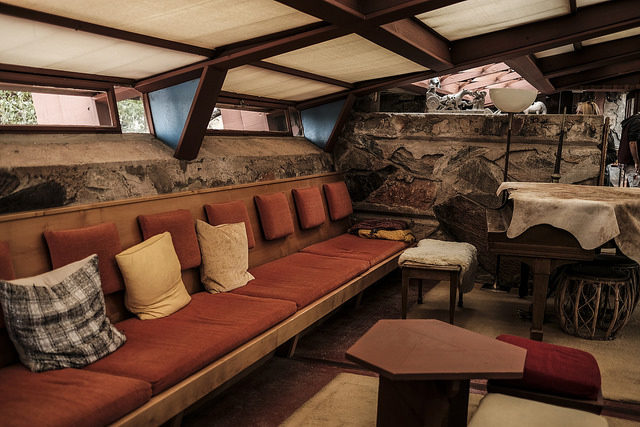
Other red parts are used as window frames, steps, and coverings for porches. For the roof, Wright used a translucent canvas but later replaced it with plastic because of the desert extremes in weather. Every part of the house bears the architect’s personal touch.
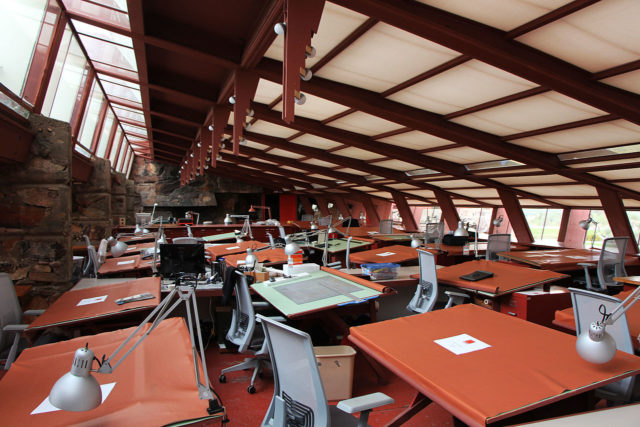
Later, Wright added a music pavilion and a cabaret theater, one of the most impressive parts of the house. Wright also designed the furniture, made in a simple cubistic style with colors matching the red elements of the building.
The cabaret theater was built with six sides in a hexagonal shape and provides acoustic perfection.
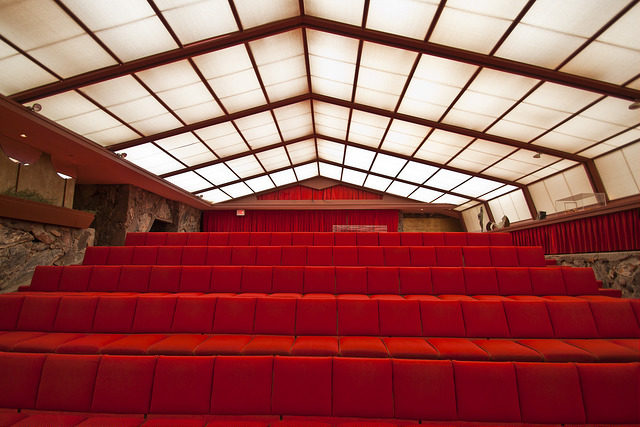
The pool at Taliesin West is also framed with rocks from the surrounding terrain, and inside, there is a fountain Wright bought during his travels.
In this winter home, Wright designed the plan for one of his most famous projects, the spiraling museum in New York City known as the Solomon R. Guggenheim Museum.
On Saturday, November 4th, of this year a gala will be head at Taliesin West to commemorate the 150th birthday of Frank Lloyd Wright and his principles, which are “as relevant today as when he first developed them.” Guests are to wear “red tie” to the event, which is about “inspiring the world through beautiful spaces that are thoughtfully designed and experienced.”
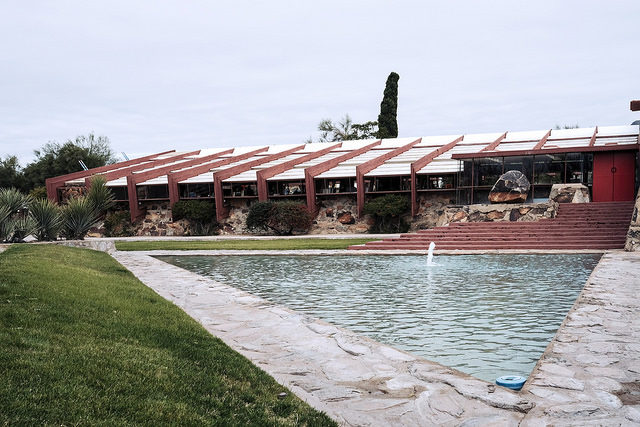
Another widely known design of Wright’s is the Grady Gammage Auditorium in Tempe at Arizona State University. In 2008, 10 sites constructed by him were on the list of World Heritage Sites suggested by the U. S National Park Service.
All of them were submitted to one single site. Today, the campus is an amazing place where students can be creative, exploring and designing architectural projects in this truly inspiring setting.
